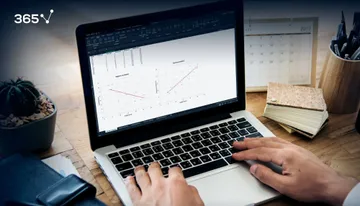
The corporate world has always been particularly competitive. However, today’s technological advancements add an additional edge to the already cutthroat environment. If companies want to be successful in the 21st century, they need to stay well ahead of the curve. One way to do that is by adopting a data-oriented approach and business intelligence strategies. Through a variety of techniques, business analysts can pinpoint problem areas and uncover hidden potential that will launch their business to the top.
In this article, we’ll talk about one of the most popular types – comparative analysis, as well as how to apply it, why it’s important, and how we can benefit from it.
What Is Comparative Analysis?
In brief, we can define this process as the comparison of 2 or more variables.
Consider two scenarios – let’s say A and B – and how the 2 variables we’ve selected would impact them. For example, when you do your logistics planning, should you take the highway, which means a farther drive that takes less time? Or should you take the local roads instead – a shorter, but more time-consuming distance? In order to answer that, we need to calculate the labour and fuel costs first, as well as consider the pros and cons of both situations. Only then can we compare the cost base for Scenario A versus Scenario B.
What Is the Difference Between Internal and External Comparison?
There are two ways of comparing these two scenarios based on our variables:
- Internally
- Externally
Internal Comparison
An internal comparison involves two business units or departments within the same organization. For example, how many invoices can a person, working in a company’s finance department in India, process on a daily basis (and on average) compared to a person employed by the same company’s UK office.
External Comparison
In contrast, an external benchmark focuses on an outside world-class performance – perhaps, the number of invoices that one company can process on average per day, per person, compared to another company’s standard.
How To Do a Comparative Analysis?
To successfully compare multiple scenarios and variables, we need to reach a consensus on the exact measures. This analysis can be based on an expert opinion when it is obvious and factually easy to understand in terms of performance drivers. Alternatively, the analysis could require the application of other techniques, such as trend or correlation analysis.
Essentially, we need to define which the value drivers in a particular situation are. Considering the comparative example we had with Scenario A and B, two important value drivers that will have to be considered are fuel cost per kilometer and the man-hour cost for transportation.
Once the measures have been validated and agreed, the next step is to align the peer groups. These may involve:
- Internal business units
- Internal departments
- External peer groups
- A single external comparator company
Before we begin our analysis, however, it is critically important to ensure the items are actually comparable and that we have properly considered any contextual differences before drawing any conclusions. For example, we can’t really juxtapose the logistics costs of two business units in separate countries if the vehicles used for transportation have different performance characteristics.
Afterall, we can’t judge apples based on oranges, right?
Comparative Analysis Use Cases
We often use comparative analysis during transformation projects – to deal with a challenge in a particular area and to depoliticize difficult discussions. In fact, it helps a company focus on determining strategies and tactics in order to get back on track.
For example, a benchmark study on Coca-Cola European Partners showed that their finance department was behind other world-class ones in terms of efficiency and effectiveness. As a result, Coca Cola European Partners launched a project to deal with that disparity. The company has now set up a Shared Service Center and a Center of Expertise at one of their locations, leveraging best practices, top-notch tools and software to guarantee first-rate performance.
Comparative analysis can also be used in many other fields, such as medical diagnostics, for example, to estimate the accuracy of the given diagnosis.
What Are the Advantages of Comparative Analysis in Business?
For starters, comparative analysis reduces emotions through fact objectivity and data-led approaches.
It encourages an in-depth understanding of the opportunities applicable to specific processes, departments, or business units. Through this type of analysis, we also ensure that we address the real root causes of performance gaps.
What Are the Disadvantages of Comparative Analysis?
On the other side of the coin, comparative analysis often requires upfront cash investments to work with third parties who provide reliable benchmarks. In addition, as we mentioned, the variables need to be comparable. For this reason, you need to have a mature data governance process in place to ensure that the juxtaposition between your departments and other companies is meaningful. As with any other initiative, you require senior-level sponsorship to secure the mandate for comparison across management entities.
That said, mature organizations carefully scope out comparative analysis as part of a broader exercise to help create a business case for change, and a roadmap for transformation in order for the process to be anchored on the need to drive actions and justify the necessary resources for making the change.
How Do Companies Benefit from Comparative Analysis?
Comparative analysis is widely used because it helps align expectations and clarify an organization's past and current challenges. This technique provides objective, fact-based insights into performance and improvement opportunities.
As part of the diagnostic phase in business analytics, comparative analysis is able to answer many of the pressing questions a company may have and help you understand how to fix underlying issues within our company to improve performance and even revenue. So, why not start learning more about it today?





